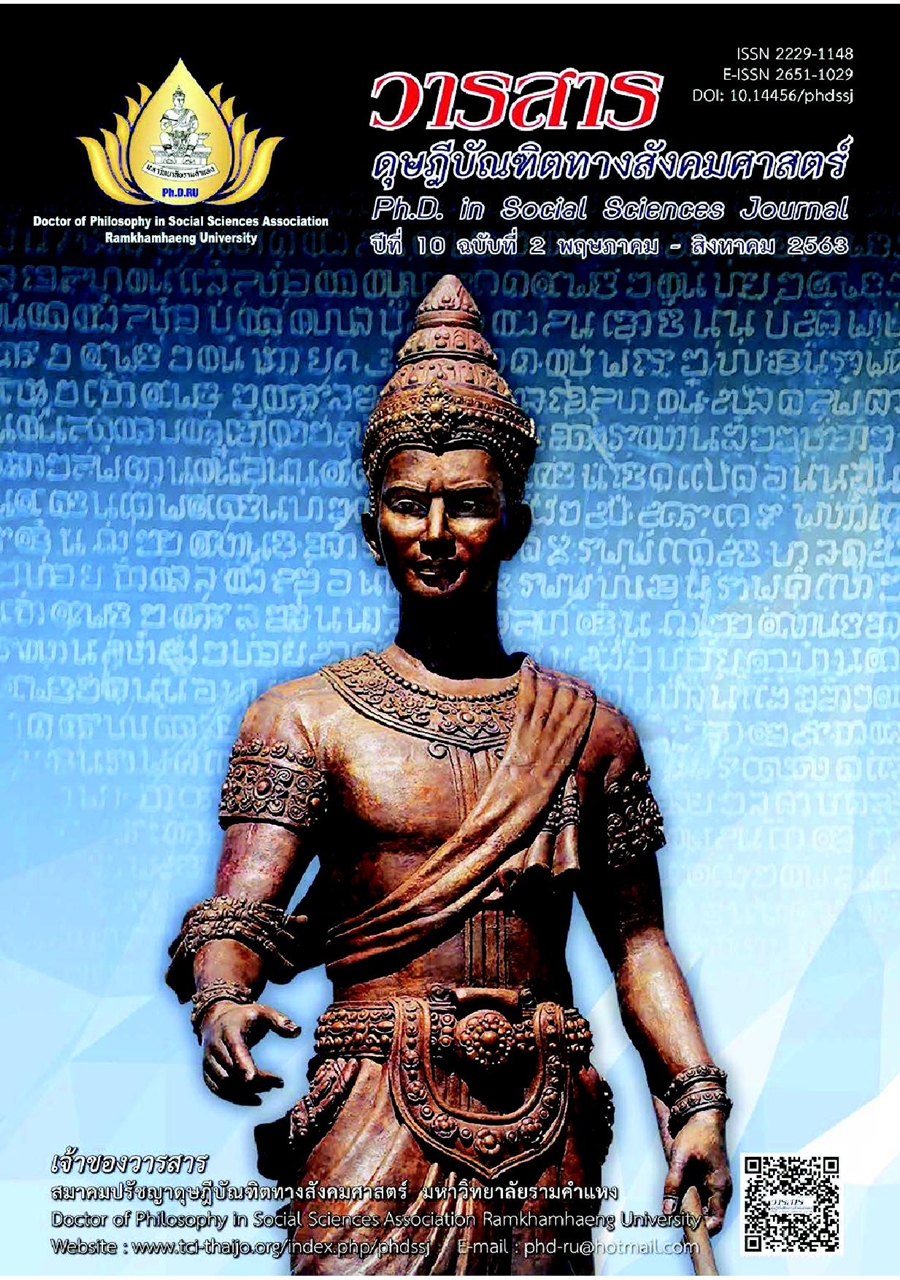A Knowledge Management Model Using Electronic Media for the Administrative Office of the Court of Justice Region I
Main Article Content
Abstract
This research article has objectives to examine the conditions of knowledge management, create model of knowledge management, and evaluate model of knowledge management using electronic media for the Administrative Office of the Court of Justice Region I. In this mixed-methods research inquiry, the researcher employed both quantitative and qualitative research methods with the sample size of 210 people.
Findings are as follows: (1) The conditions of knowledge management at the Office engages knowledge management by a training method. Next in descending order was coaching and meetings which employed information technology (IT) systems in knowledge management, especially the court program system which is during the process of having its personnel learn how to use these systems. (2) The knowledge management model based on electronic media was first instantiated by determining the knowledge management target. Then, management conditions at present were analyzed vis-à-vis integrated knowledge management in work performance consisting of six components. These were knowledge acquisition; knowledge creation; knowledge storage; knowledge analysis; knowledge transfer; and knowledge application, and (3) The organizational knowledge management model for the Office using electronic media was evaluated in respect to the aspects of knowledge acquisition, knowledge creation, knowledge storage, knowledge analysis, knowledge transfer, and knowledge application. Consequently, evaluation showed that the model was appropriate and feasible for implementation at the highest level in all aspects.
Article Details
Academic articles, research articles, and book reviews in the Ph.D. in Social Sciences Journal are author’s opinions, and not the publisher’s, and is not the responsibility of the Ph.D. in Social Sciences Journal Philosophy Association, Ramkhamhaeng University. (In the case that research is done on human, the researcher has to be trained in Ethics for Doing Research on Human Training and has to produce the evidence of the training).
References
Berlo, D. K. (1960). The process of communication. The Free Press.
Boonwan, B. (2009). A knowledge management model for the budgeting section of the Royal Thai Air Force. Doctoral Dissertation of Philisophy, Ramkhamhaeng University. [In Thai]
Dalkir, K. (2005). Knowledge management in theory and practice. Butterworth-Heinemann.
Davenport, T. H., & Prusak, L. (1998). Working knowledge how organizations manage what they know. Harvard Business School Press.
Douglah, M. (1970). Some perspectives on the phenomenon of participation. Adult Education Quarterly, 20(2), 88-98.
Gamble, P. R., & Blackwell, J. (2001). Knowledge management: A state of the art guide. Kogan Page.
Halawi, L. A., Aronson, J. E., & McCarthy, R. V. (2005). Resource-based view of knowledge management for competitive advantage. The Electronic Journal of Knowledge Management, 3(2), 75-86.
Marquardt, M. J. (2002). Building the learning organization: Mastering the 5 elements for corporate learning (2nd ed.). Davies-Black.
Morris, M. H., & Sexton, D. L. (1996). The concept of entrepreneurial intensity: Implications for company performance. Journal of Business Research, 36(1), 5-13.
Orr, E., & Persson, M. (2003). Performance indicators for measuring performance of activities in knowledge management projects. Master’s Thesis of Economics and Commercial Law, University of Gothenburg, Sweden.
Phasukyud, P. (2007). Knowledge Management (KM), Learning Organization (LO) powered edition (6th ed.). Yaimai. [In Thai]
Polphong, S. (2007). Media and technology. Chulalongkorn University Press. [In Thai]
Senge, P. M. (1990). The fifth discipline: The art and practice of the learning organization. Doubleday.
Srifa, P. (2008). E-book: Talking books (2nd ed.). Thanbooks. [In Thai]


